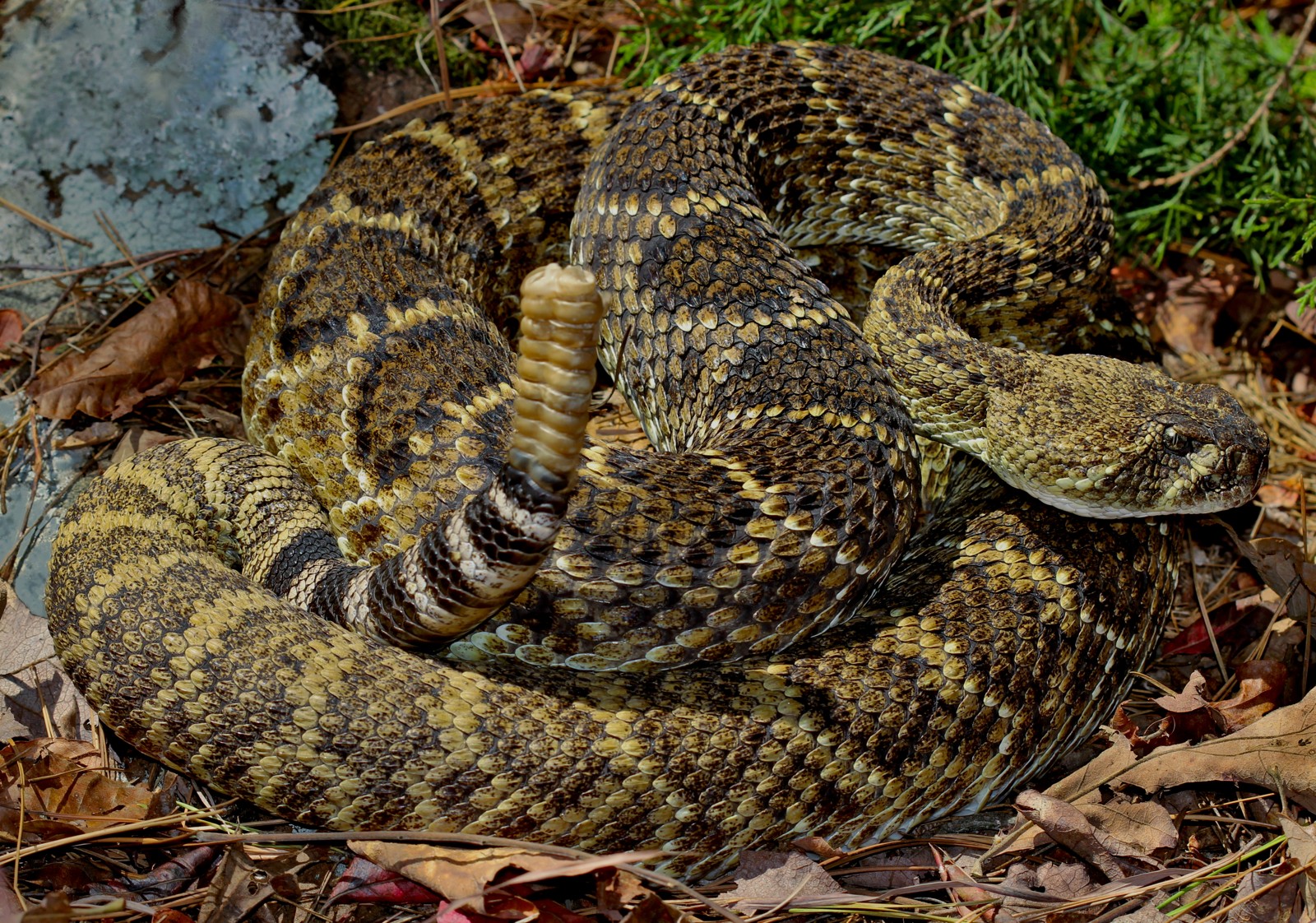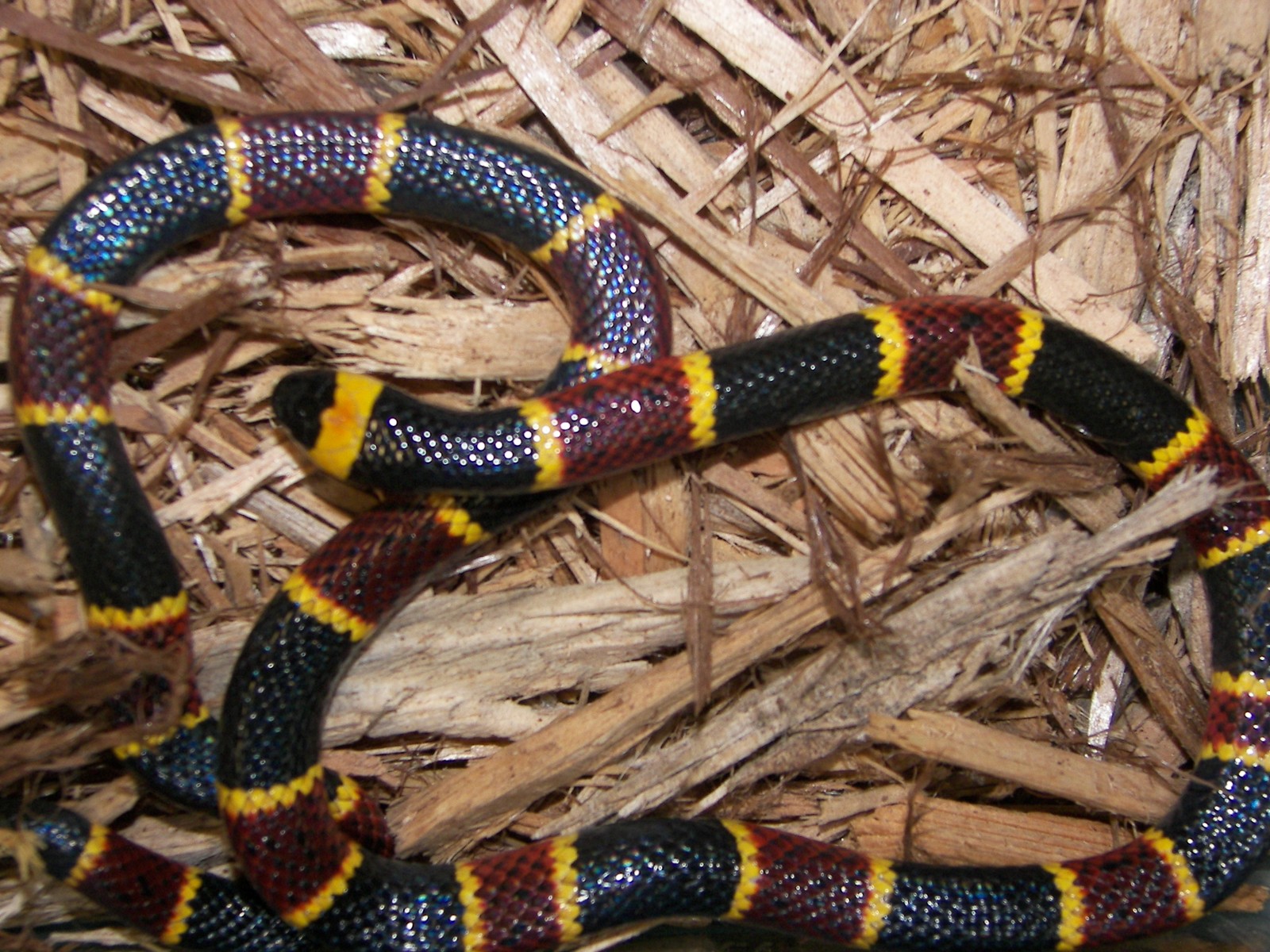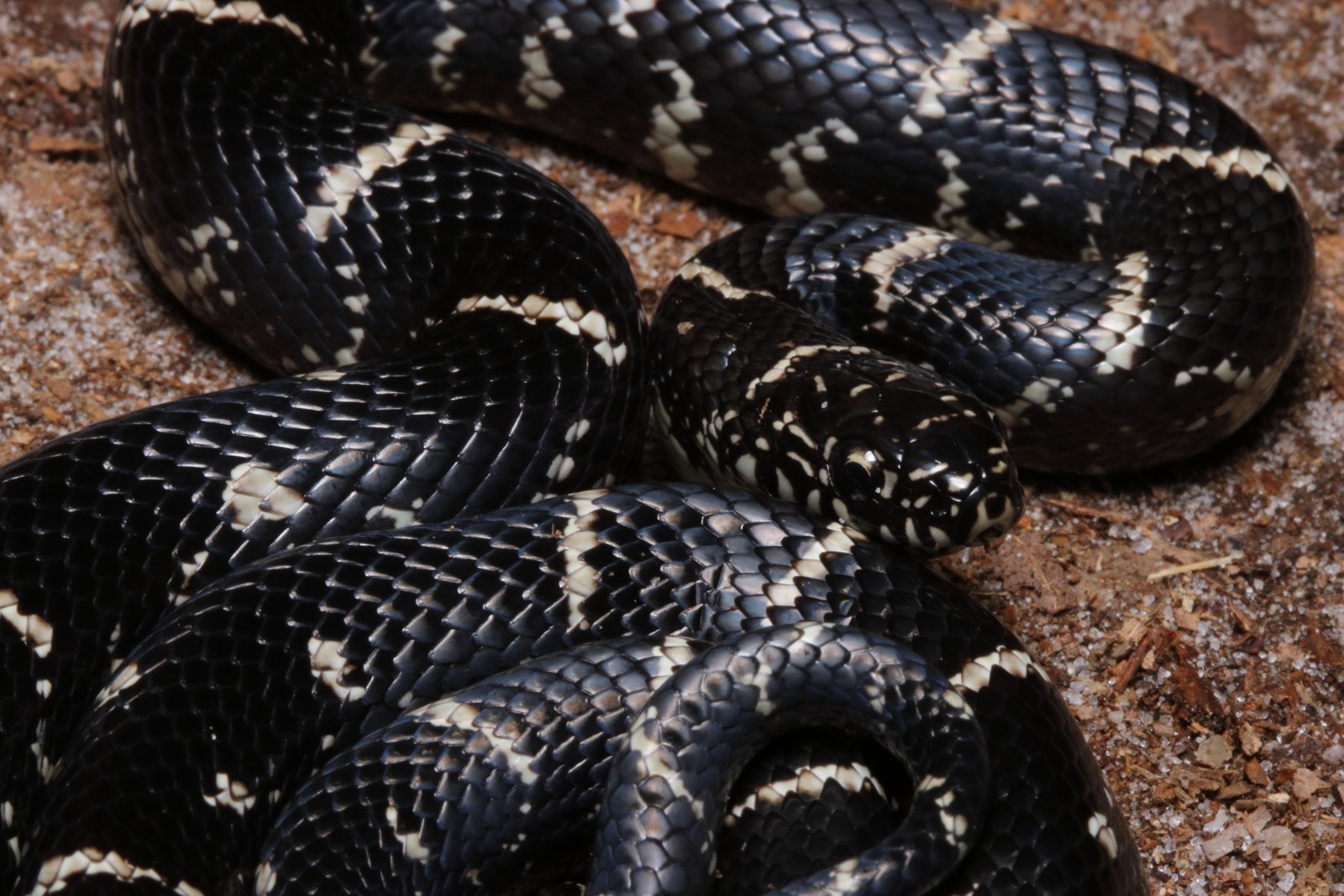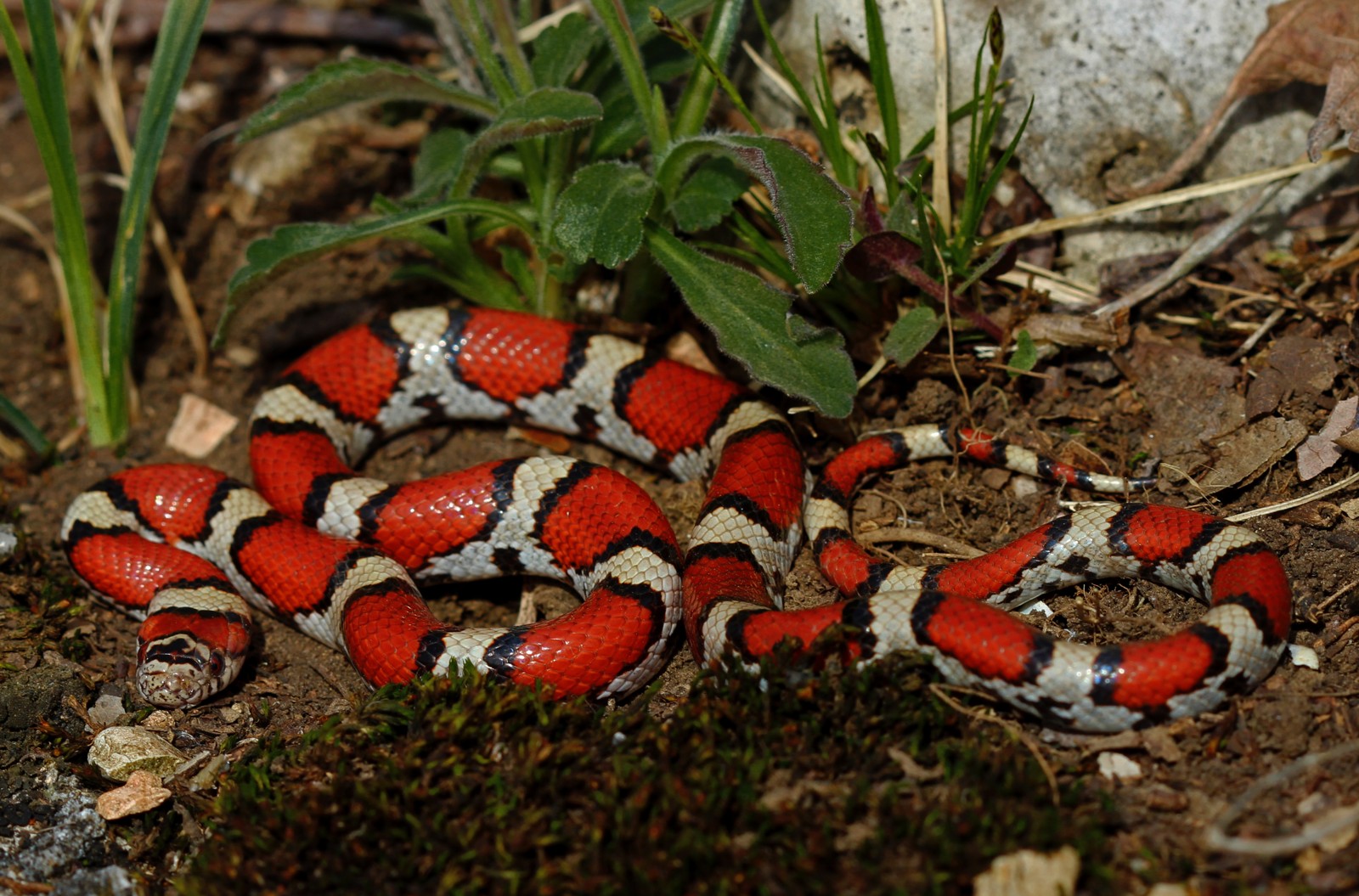Coral Snake vs King Snake: A Complete Comparison
The critical distinction between Coral Snakes and King Snakes lies in their venom potential and color pattern arrangement. While both species display striking red, black, and yellow/white bands, Coral Snakes are highly venomous with neurotoxic venom, whereas King Snakes are non-venomous constrictors. The famous rhyme “Red touch yellow, kill a fellow; red touch black, venom lack” serves as a reliable identification guide in North America.
Adult Coral Snakes typically measure 20-30 inches (51-76 cm) in length, while King Snakes grow larger, reaching 36-48 inches (91-122 cm). These serpents share similar habitats across the southeastern United States but exhibit markedly different behaviors and hunting strategies that have evolved over millions of years.
<img src=“/images/coral-snake-king-snake_coral-snake.jpg” alt=“A Eastern Coral Snake coiled on dried palm fronds, displaying its distinctive tricolored banding pattern of glossy black, vibrant yellow, and deep red rings. The snake’s smooth, iridescent scales shimmer with a metallic blue sheen in the light. This venomous species exhibits the classic “red touch yellow, kill a fellow” warning coloration, with yellow bands directly bordering red bands. The snake’s slender body forms several graceful curves against the natural substrate of brown, shredded vegetation. This specimen demonstrates the characteristic appearance of Micrurus fulvius, one of North America’s most recognizable venomous snakes.”>
© John / CC BY 2.0
The Eastern Coral Snake displays its characteristic warning coloration, where bright yellow bands directly touch red bands. This venomous species possesses some of the most potent neurotoxic venom among North American snakes, though it rarely bites humans due to its reclusive nature.
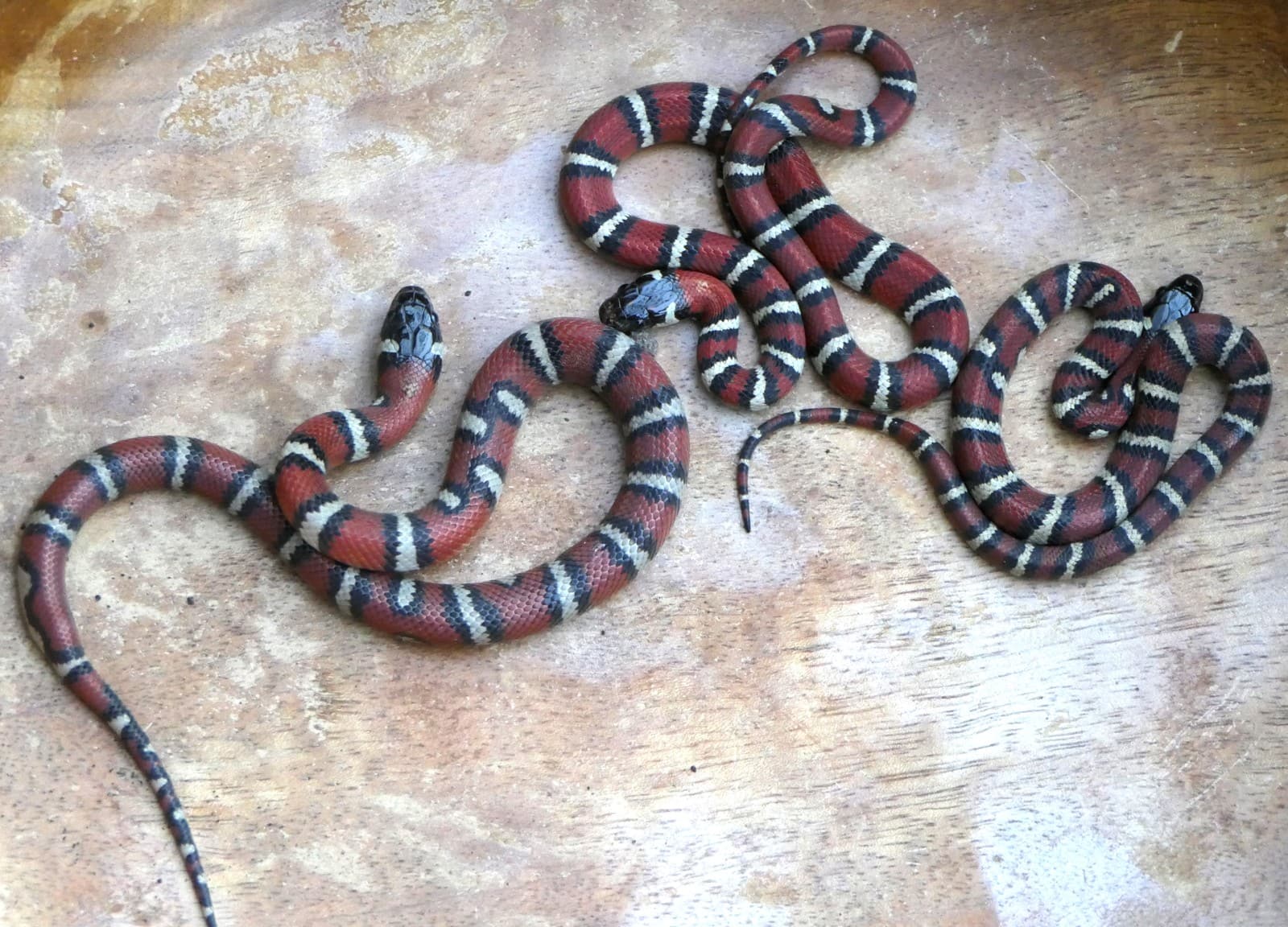
© 5snake5 / CC0
The Scarlet King Snake demonstrates remarkable mimicry of the Coral Snake’s warning colors, but with a crucial difference: red bands are bordered by black, not yellow. This harmless species benefits from its resemblance to its venomous cousin while helping control rodent populations through constriction.
Key Differences: Coral Snake vs King Snake
| Feature | Coral Snake | King Snake |
|---|---|---|
| Venom | Highly venomous (neurotoxic) | Non-venomous |
| Size | 20-30 inches (51-76 cm) | 36-48 inches (91-122 cm) |
| Color Pattern | Red bands touch yellow bands | Red bands touch black bands |
| Head Shape | Round, not distinct from neck | Slightly broader than neck |
| Behavior | Shy, secretive, rarely bites | Bold, active hunter |
| Diet | Primarily other snakes | Rodents, birds, reptiles |
Habitat and Distribution
Coral Snakes prefer sandy or woodland areas across the southeastern United States, from North Carolina to Texas, and are often found burrowing beneath leaf litter. King Snakes demonstrate greater habitat flexibility, thriving in diverse environments from forests to urban areas across most of the continental United States.
Behavior and Hunting Strategies
While both species are excellent hunters, their approaches differ significantly. Coral Snakes rely on potent neurotoxic venom delivered through small, fixed front fangs. They typically hunt other snakes, including smaller Coral Snakes. King Snakes, conversely, are powerful constrictors that show remarkable immunity to pit viper venom and actively prey on other snakes, including rattlesnakes.
Safety and Identification Tips
When encountering these snakes in the wild, remember these crucial identification points:
- Coral Snakes have round pupils and small heads
- King Snakes typically have larger heads and more robust bodies
- Coral Snakes rarely exceed 30 inches (76 cm)
- King Snakes commonly reach 48 inches (122 cm)
- Always maintain a safe distance regardless of species
Who Would Win in a Fight?
In natural encounters, King Snakes typically emerge victorious against Coral Snakes. Despite the Coral Snake’s potent venom, King Snakes possess natural immunity to snake venom and superior size and strength. Their constricting ability and aggressive hunting behavior make them formidable predators of other snakes, including Coral Snakes.
Conservation Status
Both species face increasing habitat loss due to urban development. While neither is currently endangered, local populations experience pressure from human activities. King Snakes often adapt better to human presence, sometimes benefiting from rodent populations in suburban areas, while Coral Snakes require more specific habitat conditions to thrive.
Remember: The safest approach when encountering any snake is to maintain a respectful distance and allow the animal to retreat naturally. While the rhyme about band patterns is helpful, it’s best to treat all snakes with caution and avoid handling them unless absolutely necessary.
